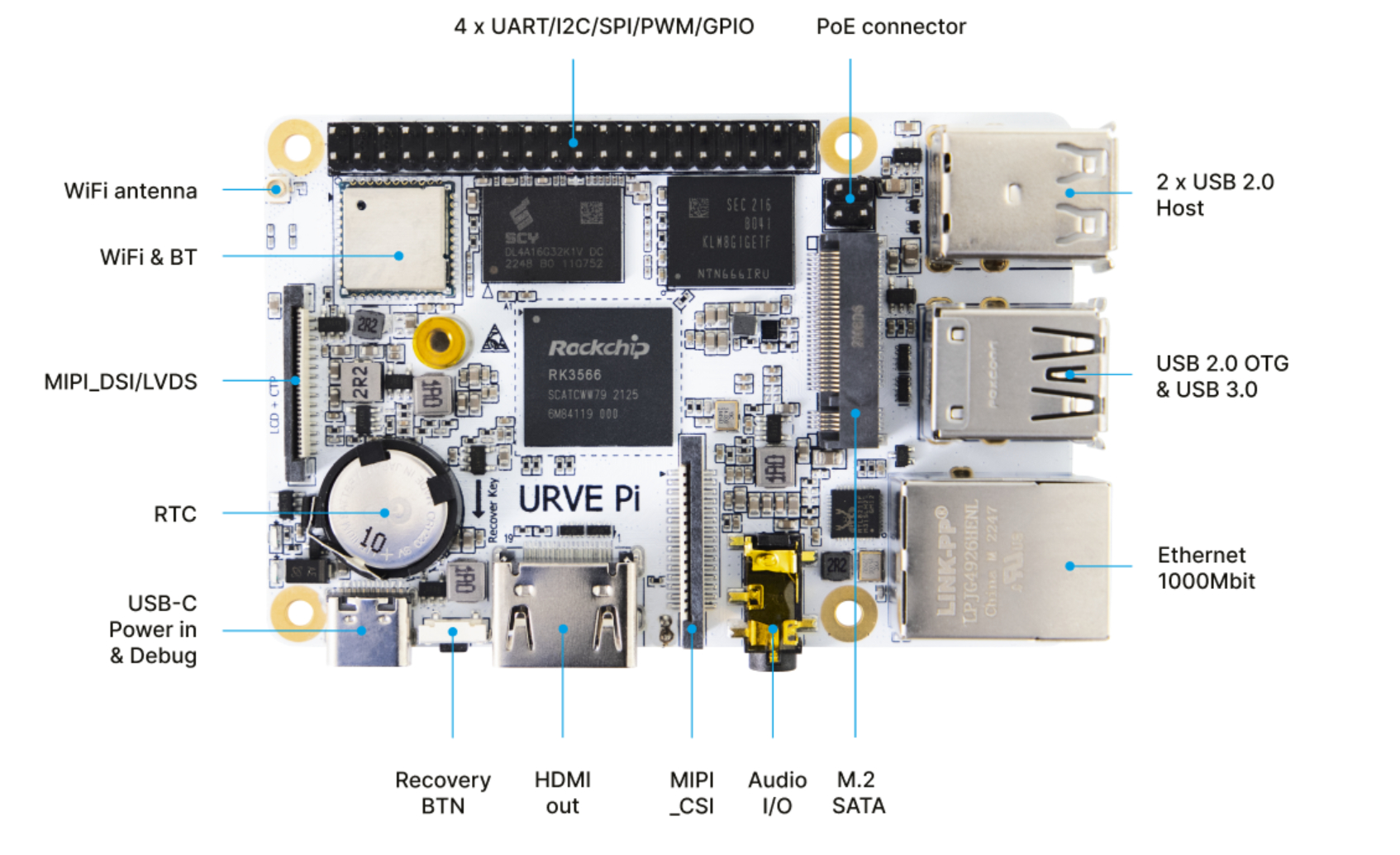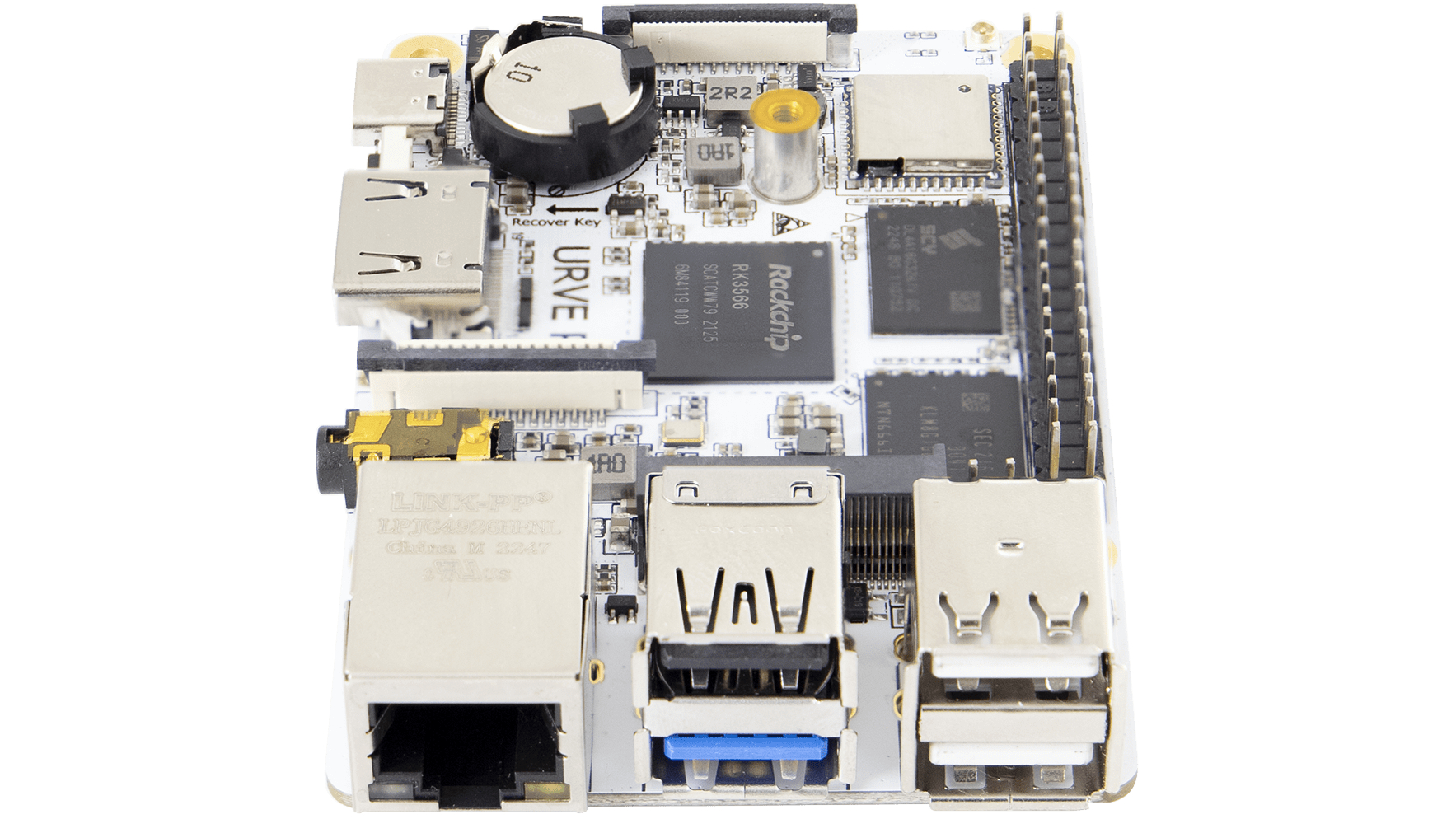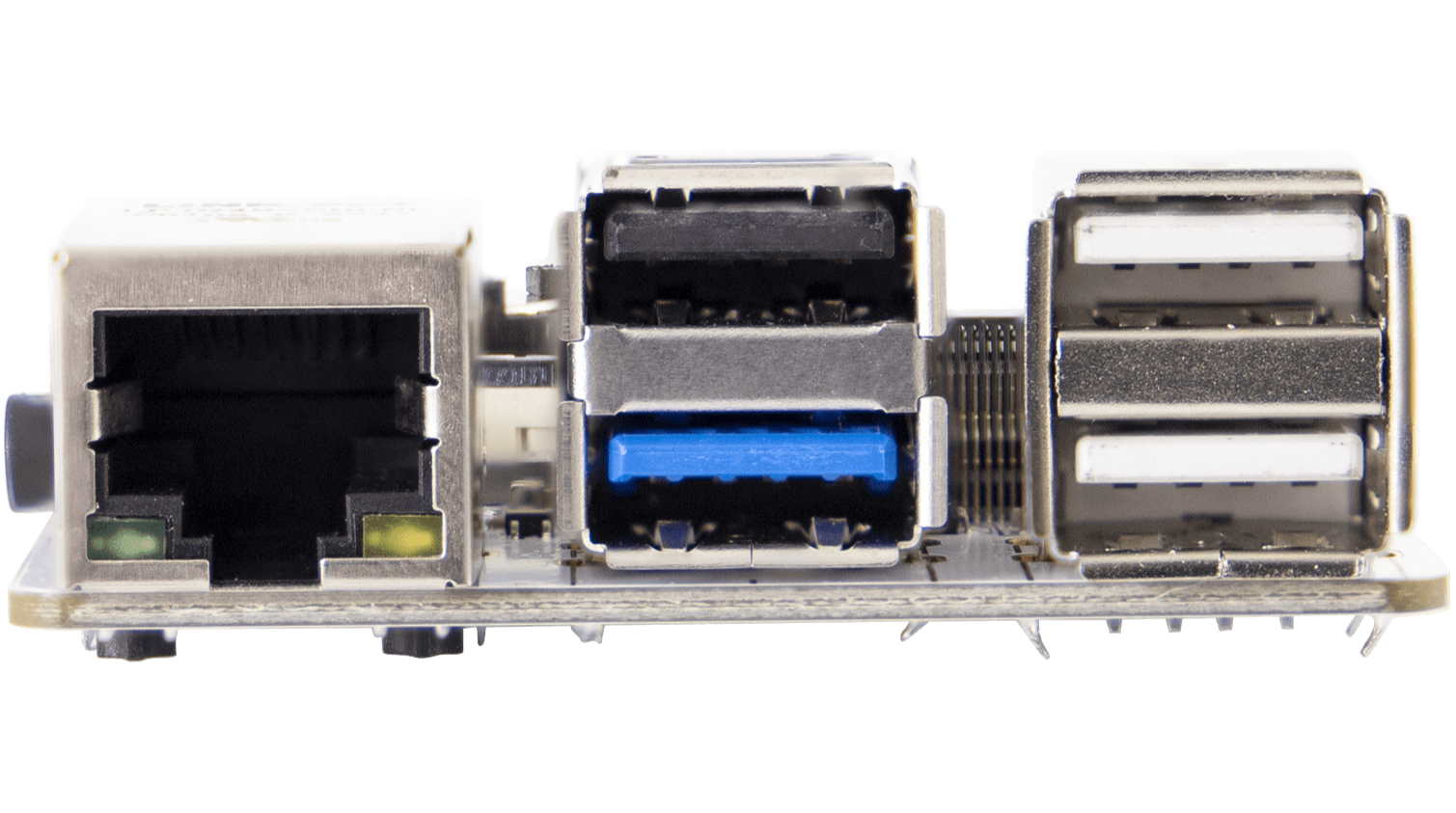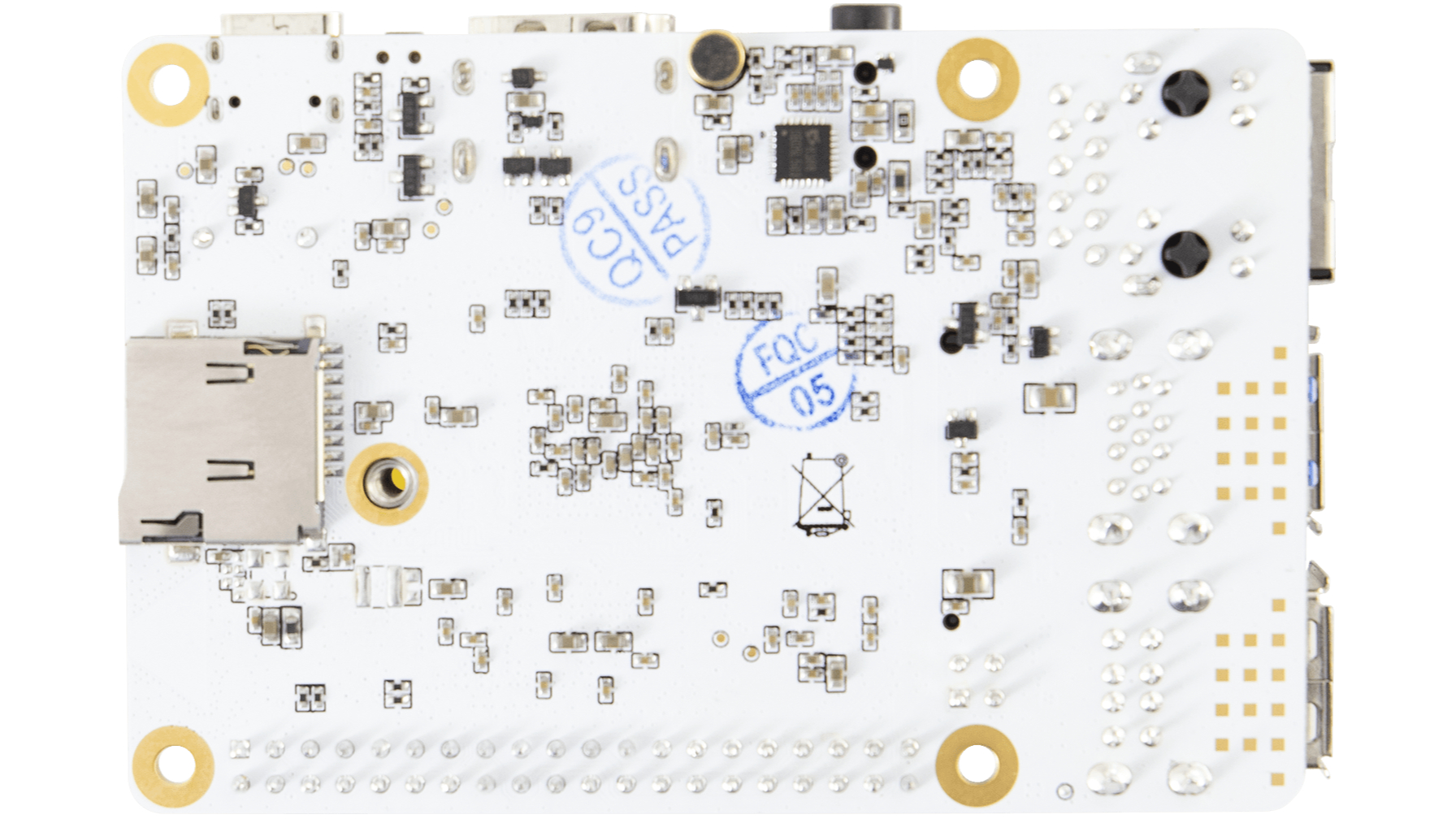Polish Raspberry Pi Clone Sports M.2 Socket, Real-Time Clock
The Urve Board Pi is the size and layout of a Pi 3B+ but with extra features
Though the situation is improving, it can still be difficult to find a Raspberry Pi in stock. Meanwhile, companies from around the world continue to offer their own alternatives to the world's most popular single-board computer. A product of Polish Electronics Maker EVEO, the Urve Board Pi has identical dimensions and a nearly-identical layout to the Raspberry Pi 3B / 3B+ but throws in unique features such as an M.2 SSD port, a real-time clock and a power-over-Ethernet (PoE) connector.
Available now for the equivalent of $90 on Polish web store TEM, the Urve Board Pi has an all-white PC PCB that's the same 85 x 56 mm size as the Pi 3B and it has pretty-much the same ports in the same locations so it should fit into a case that would accept a Pi 3B / 3B+.
In lieu of the Pi 3B's micro USB charging port, it has a USB-C port and, while it has a block of four USB Type-A ports just like a Raspberry Pi, one of these is USB 3.0 where the Pi 3 only had USB 2.0. One of the USB 2.0 ports is a USB OTG host. Video out is provided by a single, full-size HDMI 2.0 port that can output up to 4K, 60 fps while a Gigabit Ethernet port and 3.5mm audio jack appear in the same places as on a Raspberry Pi.
Also, just like on a Raspberry Pi, the Urve Board Pi has a MIPI CSI camera connector and MIPI DSI display connector. Its set of 40 GPIO pins has a pinout that appears to match that of all recent Raspberry Pi computers. So it's quite possible that some of the best Raspberry Pi HATs could work with it.

More importantly, there's an M.2 socket that the company lists as an M.2 SATA port on most of its spec sheets, but as an M.2 PCIe 2.0 NVMe SSD in the instruction manual. The socket appears to be M keyed as we would normally see for an NVMe SSD so it's unclear. Either way, you're getting much faster storage than you would from the built-in eMMC Flash memory or even one of the best microSD cards.
There's a coin cell battery slot for a real-time clock (RTC) that will keep the time even if the Urve Board Pi is unplugged. There are also pins for a power-over-Ethernet connection (PoE) and there's some kind of microphone connector on the back side of the board. The board has Wi-Fi 5 and Bluetooth connectivity.
| Processor | 1.8-GHz Rockchip RK3566 Quad-Core, Cortex A55 |
| GPU | Mali-G52 (up to 4K, 60 fps) |
| RAM | 2GB LPDDR4 |
| Onboard Storage | 8GB eMMC |
| Video Out | 1x HDMI 2.0, 1x MIPI DSI |
| Storage connectors | microSD reader, M.2 SSD |
| USB | 2x USB 2.0, 1x USB 2.0 OTG, 1x USB 3.0 |
| Networking | 1x Gigabit Ethernet, 802.11ac Wi-Fi, Bluetooth 4.2 |
| Camera Port | 1x MIPI CSI Port |
| Power | 1x USB-C, 1x PoE Connector |
| Audio In / Out | 3.5mm audio, Microphone input |
| GPIO | 40 GPIO Pins |
| Dimensions | 85 x 56 mm |
| Weight | 50g |
The Urve Board Pi is powered by a Rockchip RK3566 Quad Core Cortex A55 CPU running at 1.8 GHz. It's unclear if this would be faster or slower than the 1.5-GHz Broadcom BCM2711 Cortex-A72 chip in the Raspberry Pi 4B, but it's likely a lot faster than the 1.4-GHz BCM2837 Cortex A53 CPU in the Raspberry Pi 3B+. It comes standard with 2GB of LPDDR4 RAM and a built-in 8GB of eMMC Flash memory.
Get Tom's Hardware's best news and in-depth reviews, straight to your inbox.




As with any Raspberry Pi competitor, it cannot run Raspberry Pi OS, but it can run Debian 11 (Raspberry Pi OS is based on Debian) and Android. However, if it can work with Raspberry Pi HATs and accessories, there's a good chance it could serve as a competent substitute for the Raspberry Pi 3B+.
via Lilliputing
Avram Piltch is Managing Editor: Special Projects. When he's not playing with the latest gadgets at work or putting on VR helmets at trade shows, you'll find him rooting his phone, taking apart his PC, or coding plugins. With his technical knowledge and passion for testing, Avram developed many real-world benchmarks, including our laptop battery test.
-
bit_user Ugh. Why not at least use Rockchip RK3399? That would deliver 2x A72 + 4x A53.Reply
If I were content with 4x A55, I'd probably go with the ODROID-M1, which uses the RK3568B:
https://www.hardkernel.com/shop/odroid-m1-with-8gbyte-ram/
Some benefits being that its M.2 port is PCIe 3.0 x2 instead of 2.0, it has a SATA 3 port and comes with either 4 GB or 8 GB (the Urve board has only 2 GB). Clock speed is also a little better at 2.0 GHz instead of 1.8, but quite a minor discrepancy.
The main selling point I can see for the Urve board is case-compatibility with the Pi 3B. -
w_barath Whoever created this design wanted the M.2 SSD on top of the board so badly that they ignored the placement of the SOC, which is going to be smack in the middle of the NAND packages, which will kill them. BZZZT.Reply -
Findecanor Reply
I think it might be possible to use a M.2. SSD safely with a M.2 extension cable, but the CPU would probably still need a serious manual underclock because the extension cable would prevent you from putting a heat sink on the SoC.w_barath said:Whoever created this design wanted the M.2 SSD on top of the board so badly that they ignored the placement of the SOC, which is going to be smack in the middle of the NAND packages, which will kill them. BZZZT. -
bit_user Reply
The SoC might not run very hot. However, I found one board featuring the RK3566 which claims it's 22 nm. If you keep the CPU load generally low, it could be okay. Cooling the backside of the board should help, though probably not many Pi 3B cases are setup for good airflow there.w_barath said:they ignored the placement of the SOC, which is going to be smack in the middle of the NAND packages, which will kill them.
I tend to agree that it wasn't worth keeping the Pi 3B's form factor, unless they had some really specific reason. -
edzieba I'm sick of real-time-clocks! Give me a board with an imaginary-time clock so I can perform all my computing orthogonal to the worldline.Reply -
bit_user Reply
I know you're joking, but I can give an example of why the RTC feature is valuable. I once took the SD Card out of my pi, put it in a PC and mounted the filesystem. Then, I put it back in the Pi and then I hit some issue where the Pi wouldn't mount the filesystem because its "last mount time" appeared to be in the future, or something like that. That's because the Pi was always mounting before its clock had been set from NTP, so it was always mounting the filesystem with its clock set deep in the past.edzieba said:I'm sick of real-time-clocks!
I could have the details wrong. It was a while ago. I had to lookup the error message I got, put the SD Card back in my PC, and then force the "last mount time" attribute back to an old value. Not a big deal for me, but it's just an example of why it's nice to have a battery onboard to keep the time for you. Most PC motherboards have that, as well. -
SonoraTechnical If this were based on the RPi4B w/ 8GB and had the M2 slot located on the bottom... that would be the bomb!Reply -
bit_user Reply
I don't know how literally you mean "based on", but the Pi 4's SoC doesn't have extra PCIe lanes. It has like one 2.0 lane that's connected to its USB controller, IIRC. So, they will need a new SoC to offer anything like M.2 slots.SonoraTechnical said:If this were based on the RPi4B w/ 8GB and had the M2 slot located on the bottom... that would be the bomb!
Depending on the state of Armbian for this, you might want to consider an Orange Pi 5:
http://www.orangepi.org/html/hardWare/computerAndMicrocontrollers/details/Orange-Pi-5.html
Sadly, you can't just assume it'll work out of the box. It seems the manufacturer provides little or no support for it, so look carefully before you leap. Here's the distro I'd recommend:
https://www.armbian.com/orangepi-5/ -
texadactyl https://urveboard.com/pi/spec "aimed at all enthusiasts and creators of independent electronic projects"Reply
They are not calling it a Raspberry Pi clone. So, I can respect their design compromises, in general. The best feature IMO is the PCIE/M.2 SSD. My biggest disappointment with this product: 2 GB RAM. Linux crawls at this capacity. Maybe their market in Europe can justify that decision. I suspect that using the form-factor of the RPi3B is to be able to leverage a large market of enclosures.
